1lumen selects and reviews products personally. We may earn affiliate commissions through our links, which help support our testing.
Amutorch E3Q review
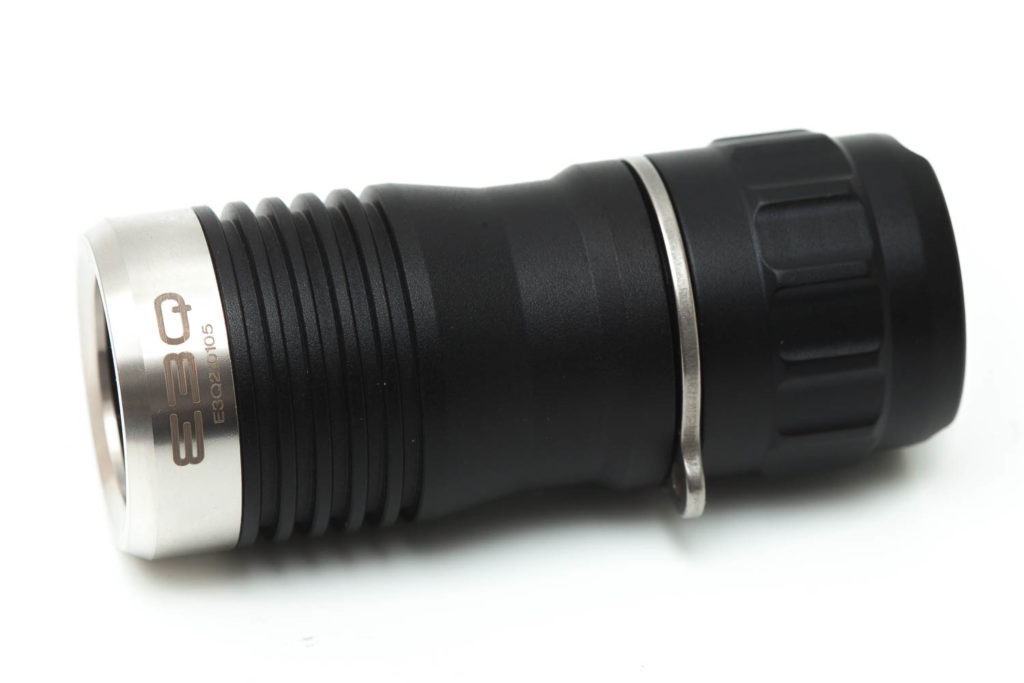
Amutorch E3Q specifications
| Brand/model | Amutorch E3Q |
|---|---|
| Category | EDC flashlight |
| LED | 3*Luminus 6500K SST20 |
| Lumens | 3,000 lm |
| Beam intensity | / 252 meters |
| Battery config. | 1*20350 |
| Material | Aluminum |
| Modes | 1-4 (you can choose), default 2 |
| Blinkies | Strobe (hidden) |
| Reflector | TIR |
| Waterproof | IPX8 |
| Review date | June 2021 |
Introduction:
So far, we’ve only reviewed a couple of Amutorch flashlights, but that doesn’t mean Amutorch isn’t expanding its lineup. We just received 3 flashlights for review, this E3H, the E3Q, and the brass Amutorch E4. All three use the same UI, which makes it easier for me to test.
This review is about the Amutorch E3Q, a small 20350 EDC flashlight with 3,000 lumens. It looks exactly the same as the E3H, but then shorter. Although the UI being the same, there is a noticeable difference in output and especially in runtime. A 20350 1400mAh will have a much shorter runtime than a 21700, 5000mAh mAh battery that is used in the Amutorch E3H
Package quality.
Starting with the packaging, all three of the Amutorch flashlights I received were sent in a simple brown carton box. Inside the box is the following:
- The Amutorch E3Q
- 1 spare o-ring
- 20350 battery (optional)
- Charger (optional)
That’s not a whole lot, but sufficient to get started. One thing I did miss is a normal English manual, just like with the other 2 Amutorch lights I received. Even without it, the UI is quite easy to decipher.
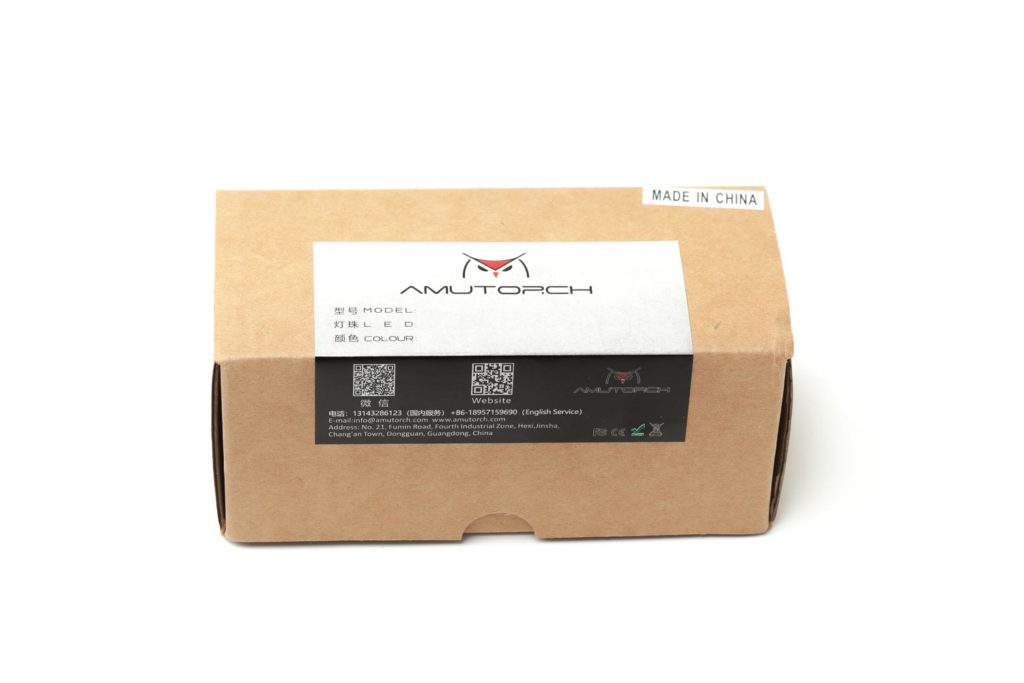
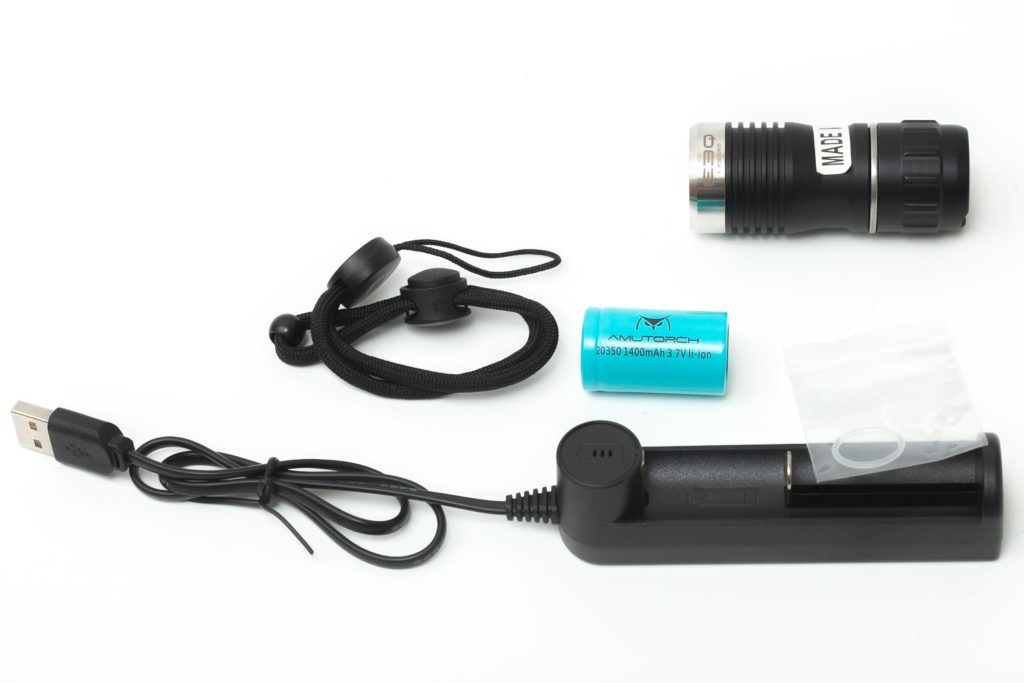
Flashlight in use
The Amutorch E3Q uses a simple reverse-clicky switch. This means that you have to fully press (and hear the click) to turn the light on. And because of this, there is no momentary mode. There’s no problem with the switch and it works as expectedIt doesn’t feel mushy or cheap.
The light itself is actually very compact. There’s no knurling on the body, nor on the head, but the head has some heat fins. There is no lanyard attachment on the body, but it does have a lanyard ring with a small loop. The ring can be removed if you want. Unfortunately, or fortunately, the ring spins freely around, so it doesn’t work as a anti-roll feature.
Since the body has no knurling it could become a little slippery, so just keep that in mind.
Tailstanding is no problem.
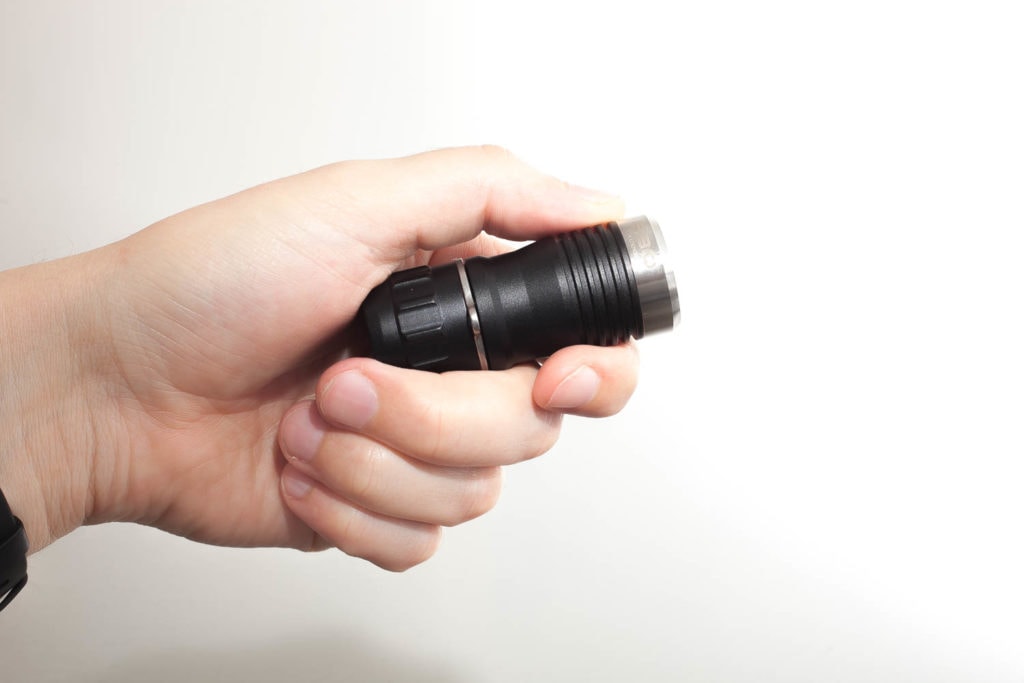
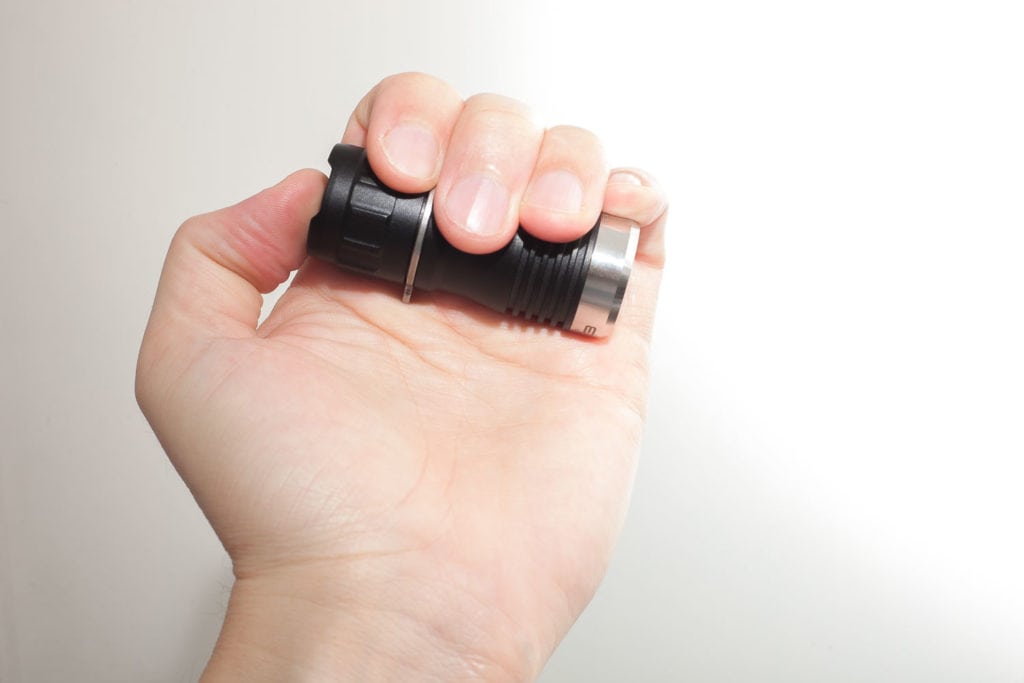
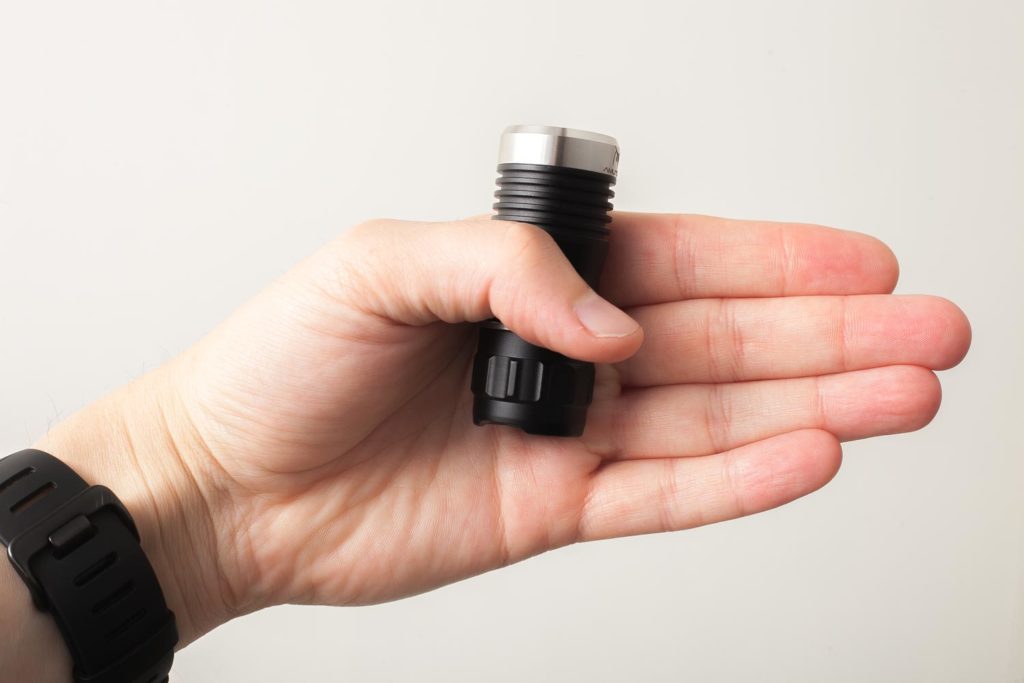
Build Quality, and Warranty
The Amutorch E3Q consists of 2 parts. The body (including the head) and the tailcap. Unscrewing the tailcap revealed some chipped/missing anodization, which is a pity. Threads came bone dry, and I don’t mind that, since I can apply my own lube for that. But there was something else I noticed. The threads have some missing anno, which isn’t a problem in terms of functionality, but it doesn’t look good.
Its design isn’t something I get really excited about, and looks a bit dull. I know you can only do so much, but this doesn’t let my heart skip a beat.
A white o-ring keeps the lanyard attachment ring in place. I’m not a huge fan of this option, but it’s easy enough to remove it. The ring itself spins freely around, and is likely made of stainless steel.
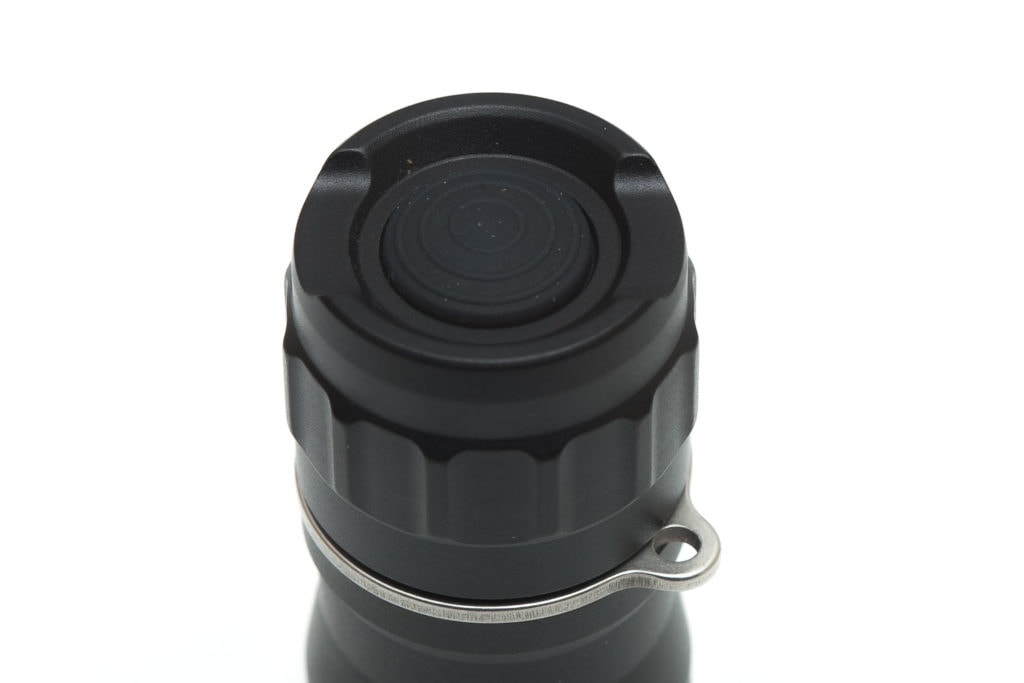
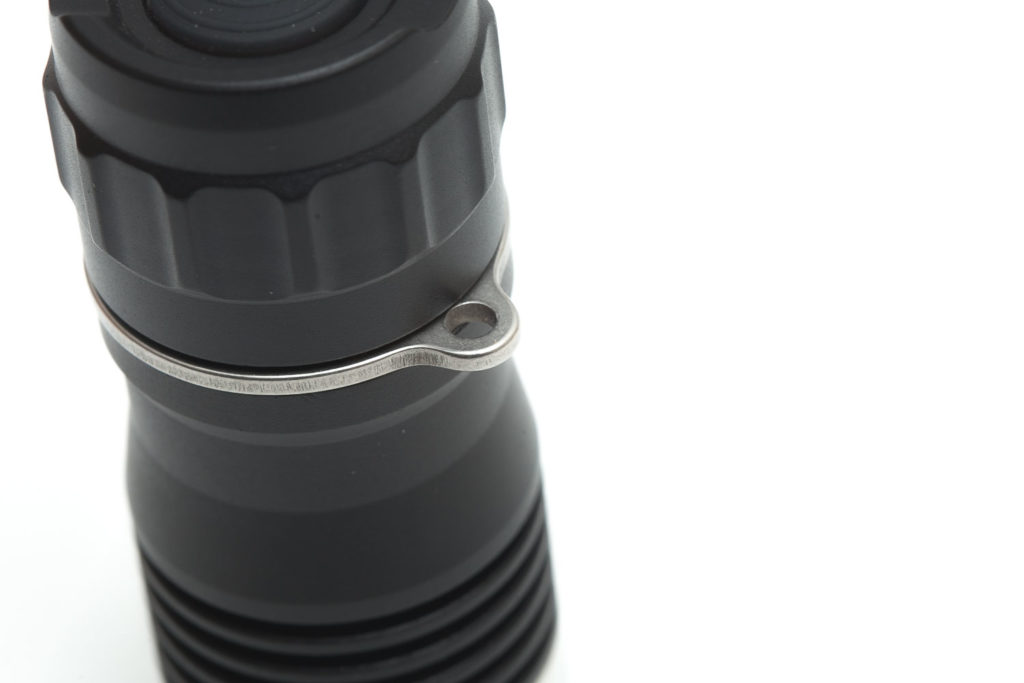
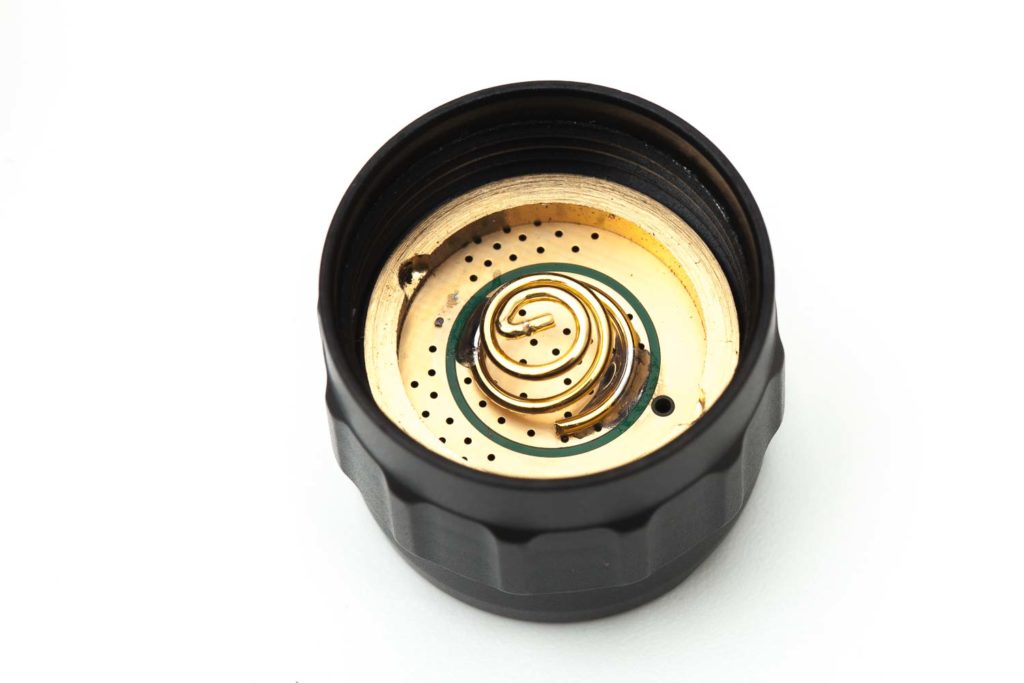
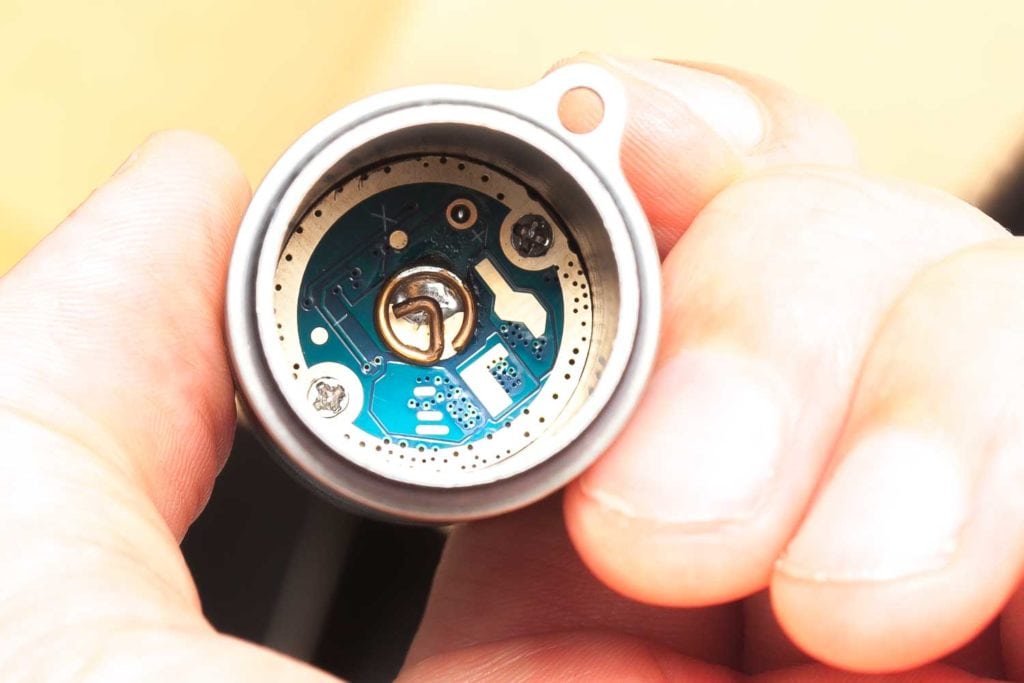
LED, Lens, Bezel, and Reflector
At the business end of the flashlight, you’ll have 3 LEDs behind a clear Carclo TIR optic. Amutorch has 2 LED options: Nichia 5000K LEDs and the Luminus SST20 6500K LEDs. So depending on the color temperature you want, you’ll get either Nichia or Luminus LEDs.
My copy has the Luminus SST20 6500K version and is supposed to be brighter than the Nichia version. So all the measurements in this article are of course based upon my copy, and not the Nichia LEDs.
The Carclo optics make a nice smooth beam with a large hotspot and a nice smooth transition into the spill, and then into the darkness. If you want to take a look on the inside you better use some tools, because it’s really difficult to take off by hand. At least I couldn’t do it.
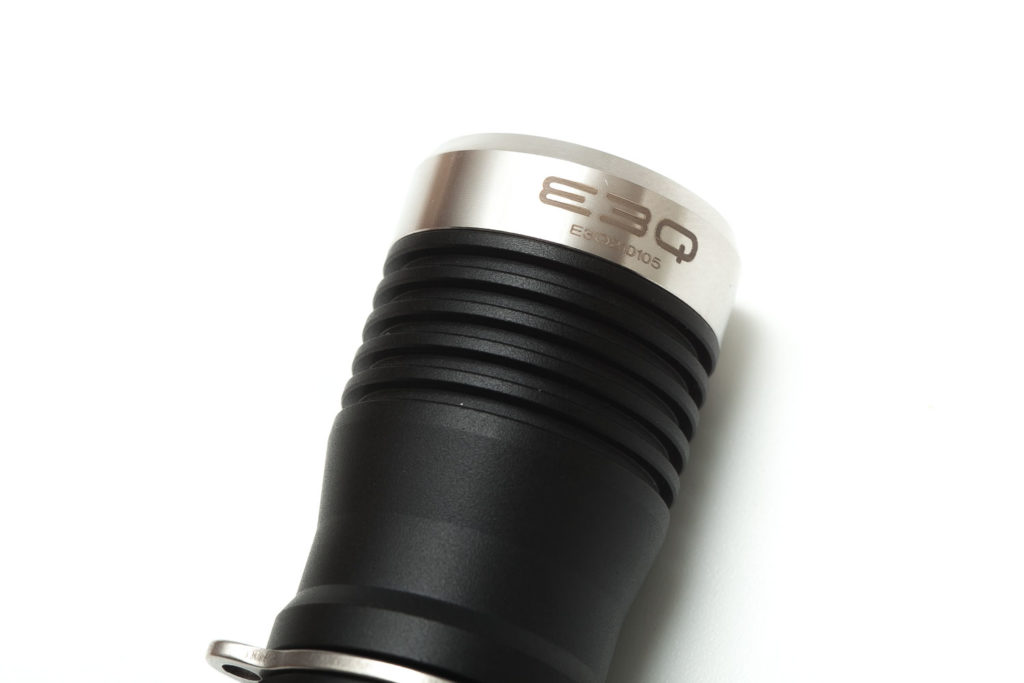
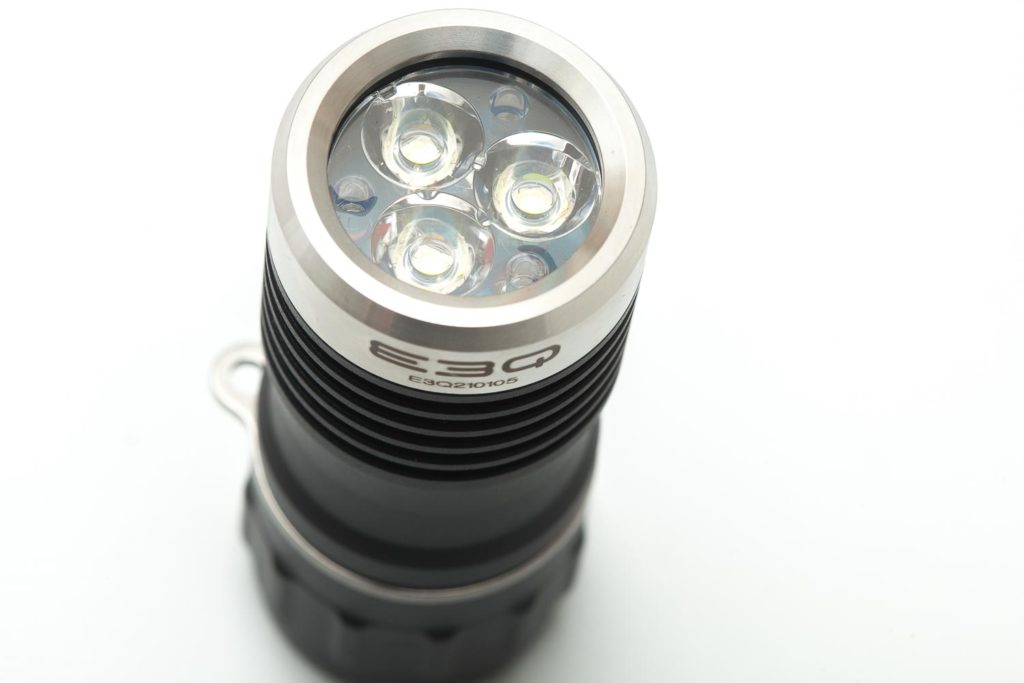
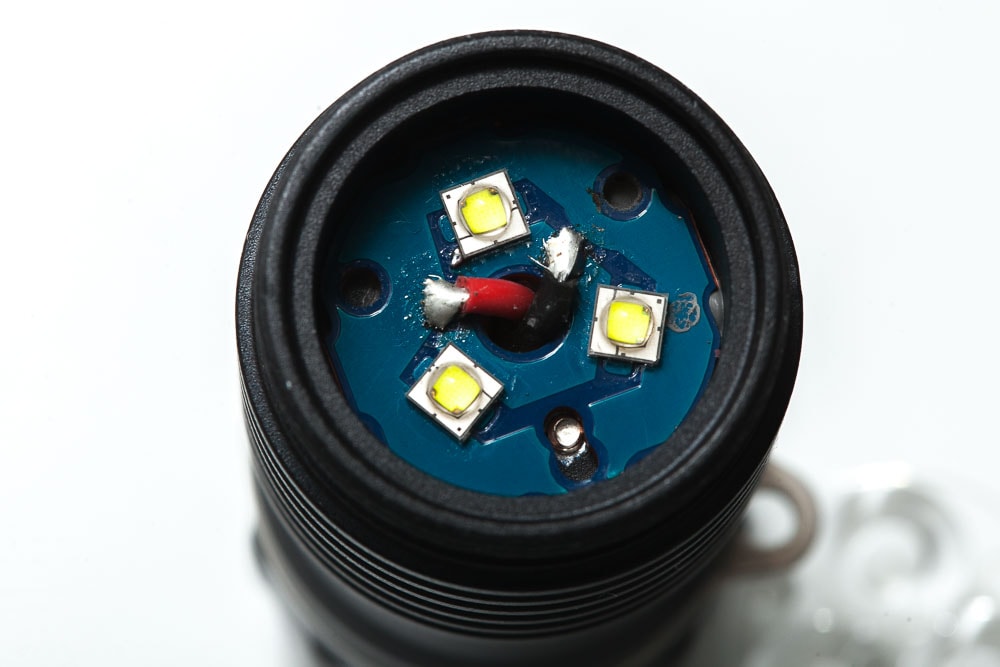
Dimensions and size comparison
- Length: 69.6mm / 2.7″
- Head/bezel diameter: 28mm / 1.1″
- Tailcap diameter max: 28.8mm / 1.1″
- Tailcap diameter: 28mm / 1.1″
Weight:
- Empty: 60.7 g / 2.14oz
- With battery: 88.6 g / 3.13oz
EDC Flashlights size comparison
Size compared to other EDC flashlights.
Image 1+2; from left to right: Amutorch E3Q, Amutorch E4, 21700 Amutorch battery, Lumintop EDC AA, Baivic V4+, Amutorch E3H.
Image 3: Amutorch E3Q, Amutorch 21700 battery, Amutorch E3H.
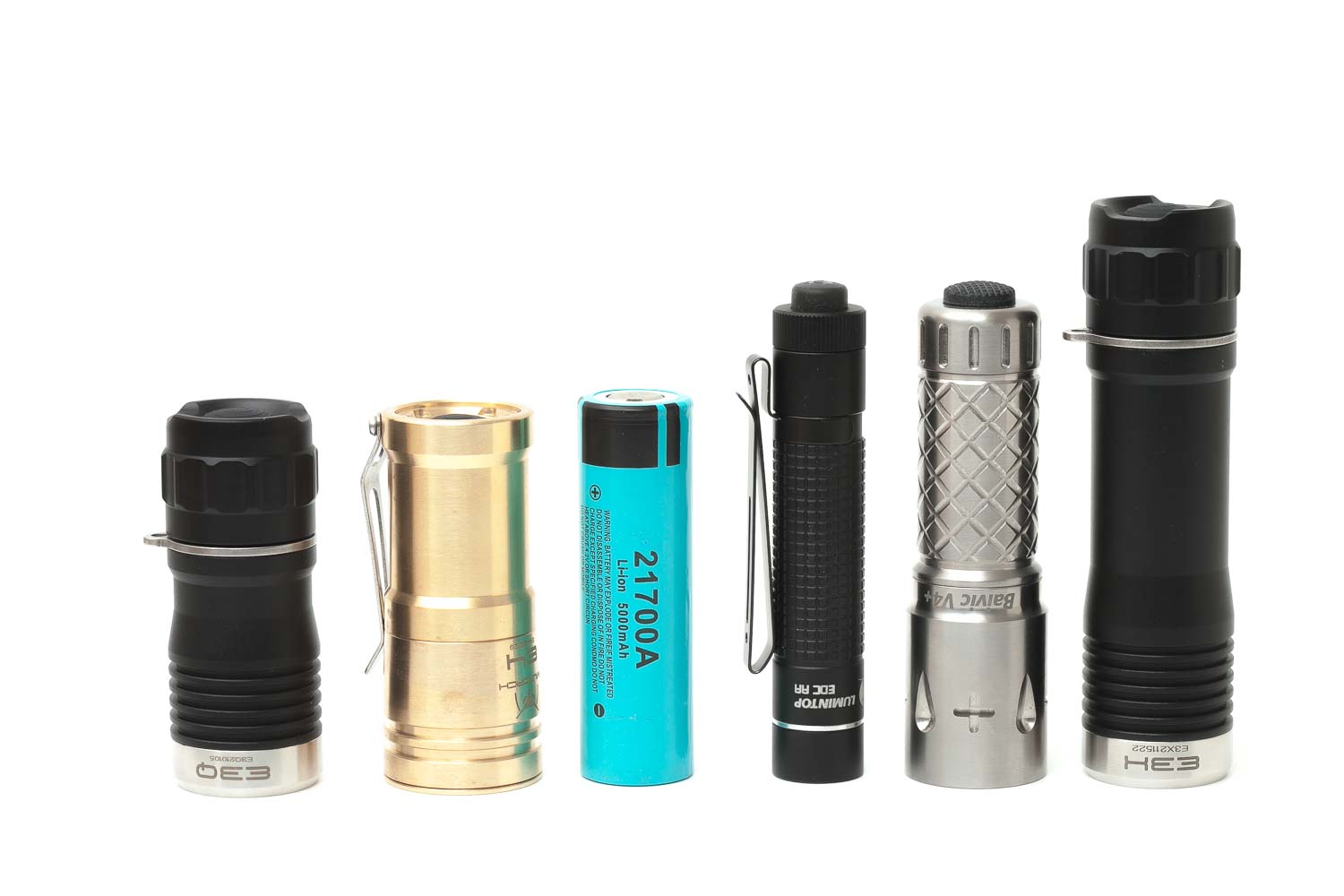
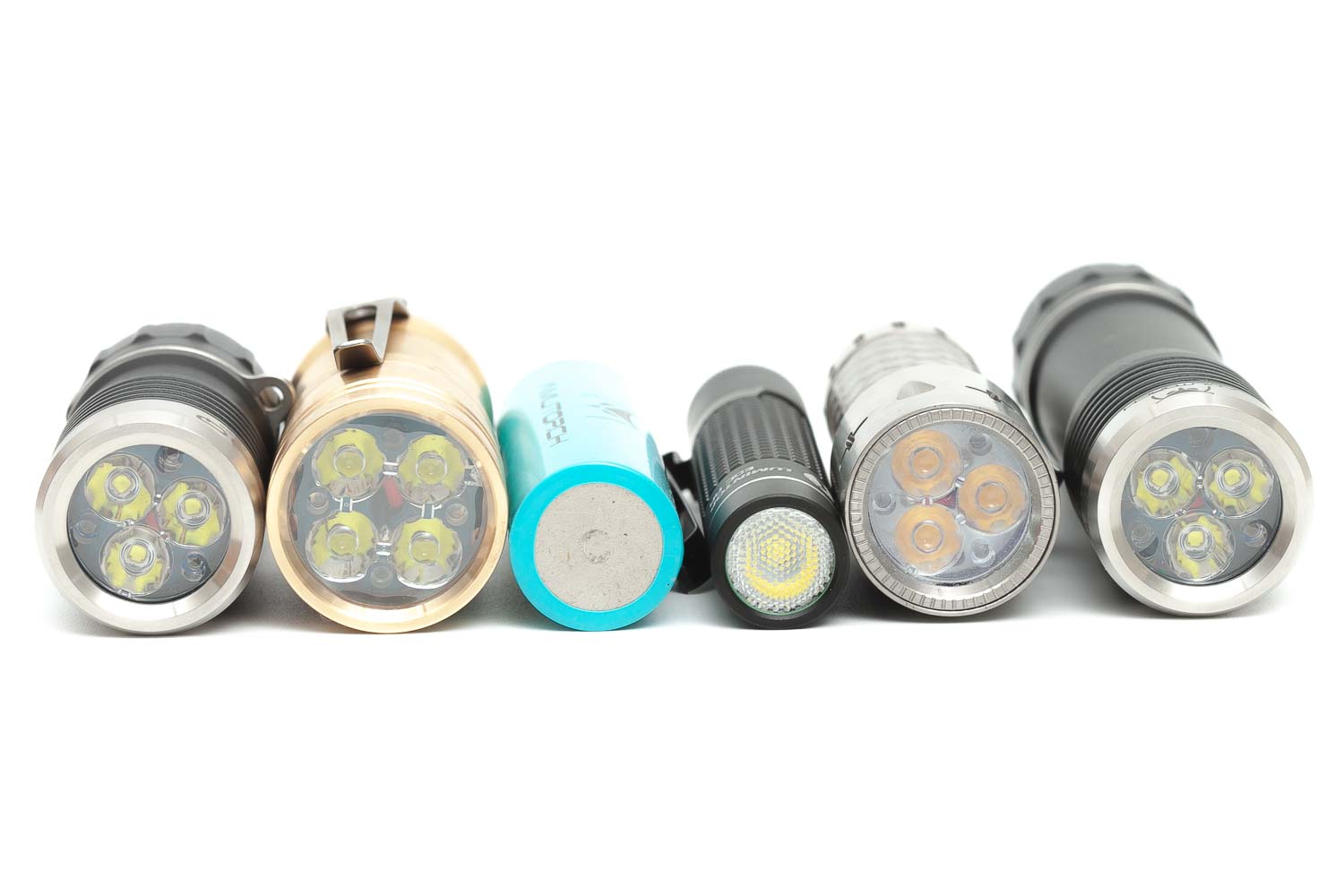

Driver & User Interface:
The Amutorch E3Q uses the same User Interface as the Amutorch E4 and Amutorch E3H (which is basically the same flashlight but with a larger battery tube).
By default it has 2 modes, Low and Turbo, but you can select your own desired mode group by doing 5 taps when On. It then starts blinking 1 time, 2 times, 3 times, 4 times, 5 times.
When you click the switch, that mode group is memorized.
Mode groups: (Keep in mind that Turbo and Strobe are accessible from all mode groups!!!!
| Mode Group: | Available Modes: |
|---|---|
| Group 1 | 1 mode: High |
| Group 2 | 2 modes: Eco, High |
| Group 3 | 2 modes: Med, High |
| Group 4 | 3 modes: Eco, Med, High |
| Group 5 | 4 modes: Eco, Low, Med, High |
Available modes:
- Eco, Low, Med, High + Turbo
- Hidden strobe
From OFF:
- Half-press: nothing, it’s a reverse clicky switch
- Single-click: (to last used mode, mode memory)
- Double click: off again
From ON:
- Half-press: Cycle through the menu from Low to High
- Single-click: turns off
- Double tap (not click): Turbo
- Triple-tap (not click): Strobe
- 5 taps (not clicks): Programming menu
Shortcuts:
- To Turbo: double click from on
- To Moon: none
- To Strobe: triple click from on
Mode memory:
- Yes
Blinky modes menu:
- You can enter strobe menu when you do 3 quick taps when the flashlight is on. A quick tap will bring you back to the normal modes.
Low battery warning:
- Yes, the light starts blinking when the battery runs low. It will shut off around 3V, which is very conservative.
Lock-out mode:
- Just use the reverse clicky switch
PWM:
- Not visible by eye.
Conclusion:
To me, ECO shouldn’t be 30 lumens, and Low shouldn’t be 180 lumens. In my opinion, ECO should be like 1-5 lumen, and Low about 20-30 lumens max.
Batteries & Charging
Amutorch included a 20350 battery and the C1 battery charger. It charges lithium-ion batteries at 1A. I’m not into reviewing chargers, so I usually skip tests besides the ‘normal’ usage test, where I just charge the battery and see how much current the charger is using.
The charger has a red indicator LED lit during charge, which turns green when it is finished. The charge current does decrease towards the end of the charge, even though the indicator LED already shows a green light. There’s a USB cable connected to the charger, that can’t be taken off. Other chargers usually have a Micro USB cable, but this one is just attached, which is a good thing.
Whene I charged the battery in my the SkyRC MC3000 it only charged about 1280mAh. Either the flashlight is using a has a high cut-off Voltage, or the battery isn’t really 1400mAh.
I then did a discharge test of 1 of the 20350’s. I set the discharge currentat 750mA and 2.75V as the end Voltage. When it finished the discharge test, it showed a total discharge capacity of 1282mAh. This isn’t bad, but not 1400mAh either.
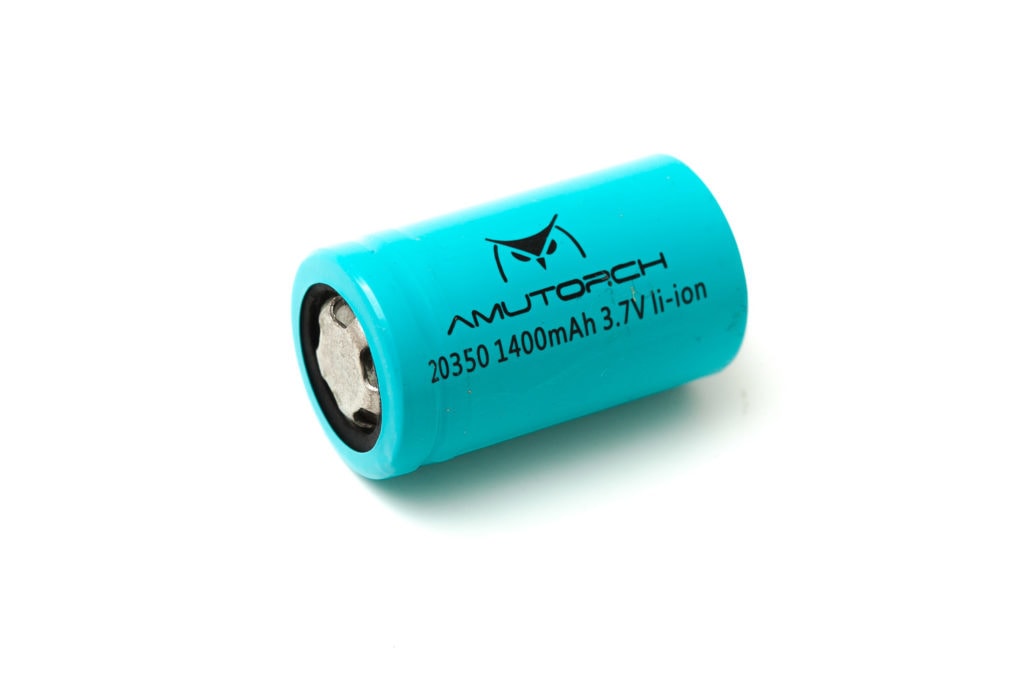
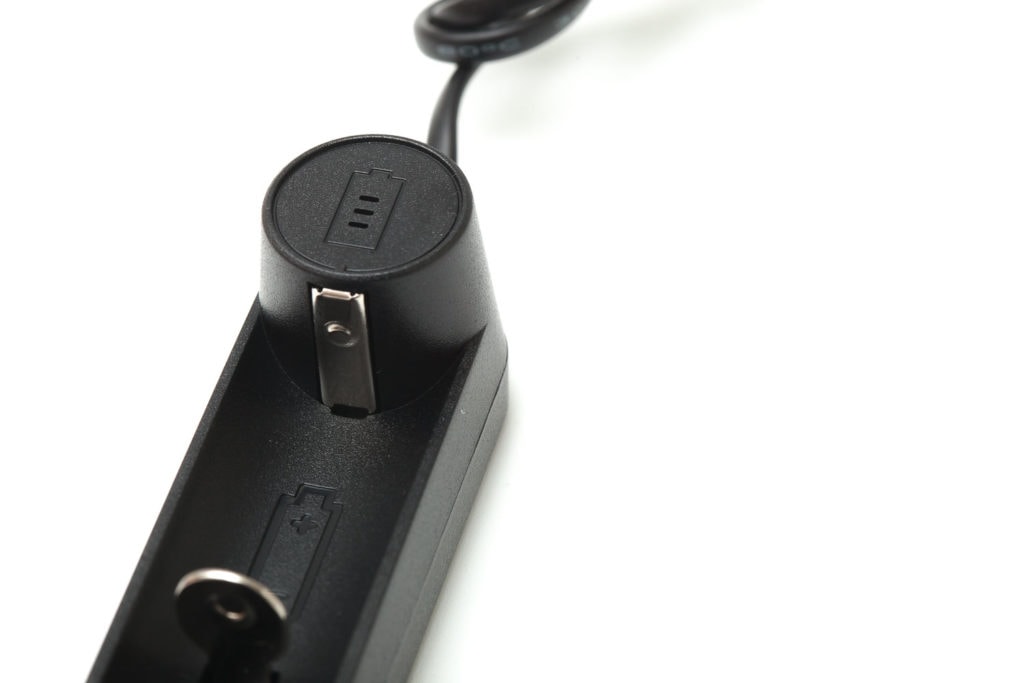
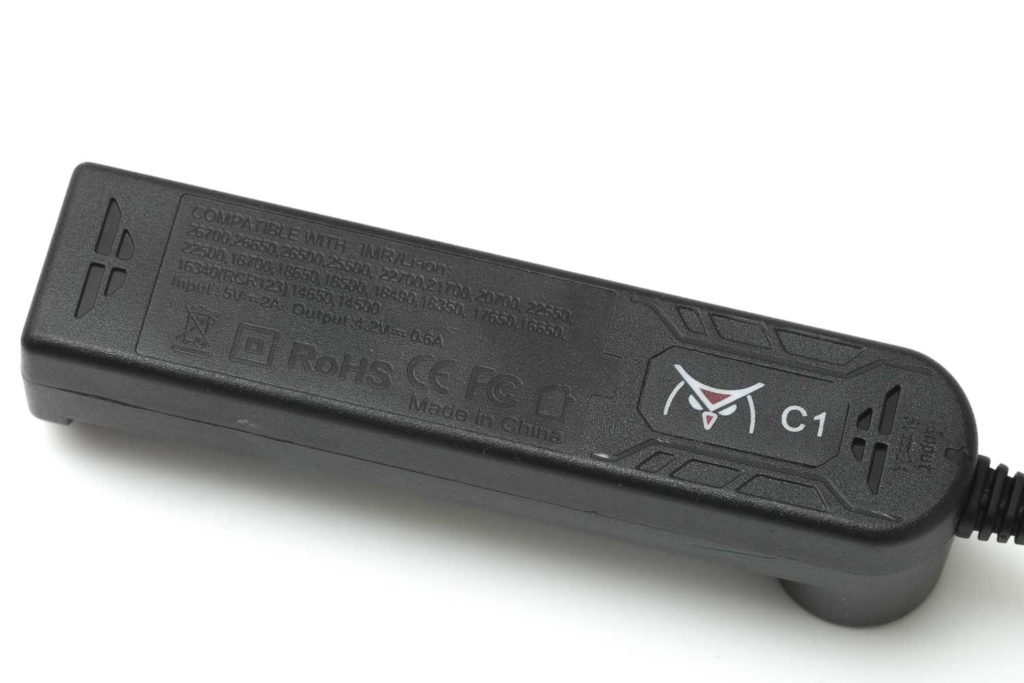
Performance
Lumen measurements:
All output numbers are relative to my homemade Integrating Sphere. It is set up with an Extech SDL400 Lux Meter for measurements including a Kenko PRO1D ND-16 filter. The base measurement is done with a Convoy S2+ that has been tested at 255 lumens.
All of my readings were taken from a fully-charged Amutorch 20350 1400mAh.
Amps were measured with a Fluke 77III.
| Mode | Amps AT start | Specs | 30sec | start |
|---|---|---|---|---|
| Eco | 0.05A | 30 | 19.75 | 19.75 |
| Low | 0.35A | 150 | 155 | 157 |
| Med | 0.70A | 350 | 301 | 303 |
| High | 1.52A | 700 | 608 | 618 |
| Turbo | 5.2A | 3000 lm | 2101 lm | 2598 |
My measurements were more in line with the specs than the Amutorch E4 I tested earlier. Turbo shouldn’t be specced at 3000 lumens, but 2000 lumens, and High shouldn’t be advertised as 700 lumens but 600 lumens. If they did that, they’d become more trustworthy. Keep in mind that the measurement in Turbo is just before the output drop at 30 seconds.
Runtime:
The runtime test was done with the 50cm integrating sphere, including the Kenko Pro1D ND-16 filter and Extech SDL400 data logging Lux Meter.
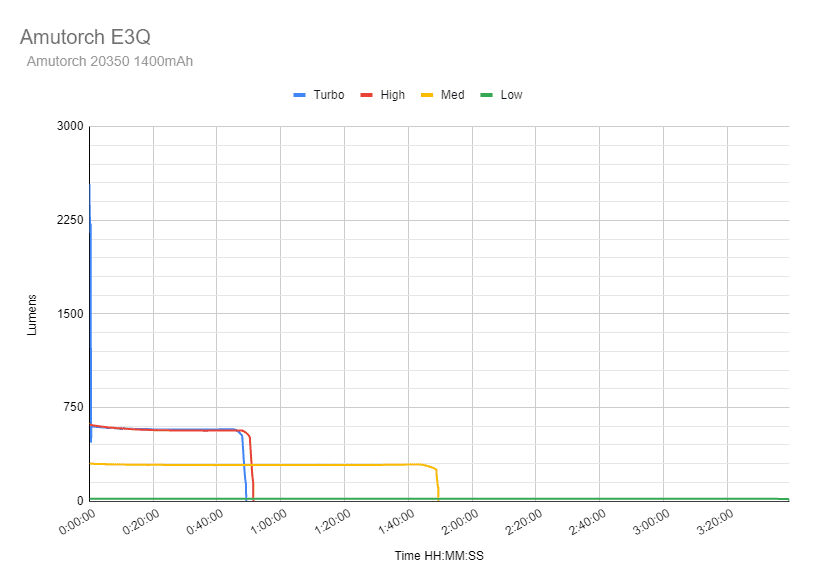
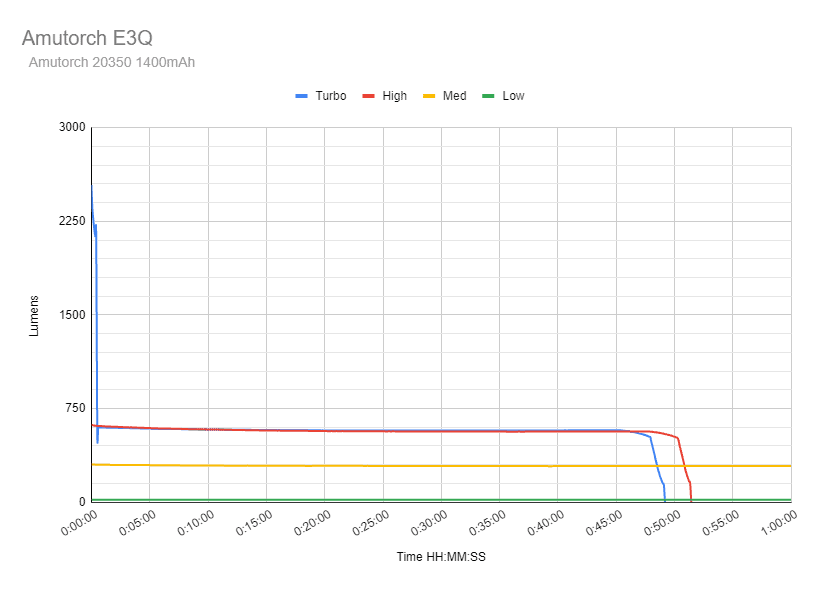
Turbo starts at around 2600 lumens and drops down to 2100 lumens in 30 seconds when it drops down to roughly 600 lumens. Turbo can be reactivated after it steps down. Keep in mind that the light gets very hot, so it’s very unlikely you will enjoy Turbo for several minutes. The total runtime for Turbo mode is 49 minutes.
High mode starts at around 618 lumens and slowly drops to below 600 lumens till it starts declining quicker at about 49 minutes and then turns off at 51 minutes.
Medium mode has a pretty consistent output of about 290 lumens with a total runtime of a 1 hour and 49 minutes.
Low mode is also very consistent at about 19 lumens for 3 hours and 39 minutes.
The flashlight starts blinking a few minutes before it turns off in all modes.
Throw Measurement
Measurements were taken indoors at 5 meters, with a professional Hagner E4-X Lux Meter. (30 seconds)
| Mode | Candela measured | in Meters | in Yards |
|---|---|---|---|
| Eco | 100 | 20 | 22 |
| Low | 800 | 57 | 62 |
| Med | 1625 | 81 | 88 |
| High | 3300 | 115 | 126 |
| Turbo | 12,300 cd | 222 mm | 243 yd |
Although not bad in terms of throw, it’s not reaching the claimed 252 meters either. This isn’t a biggy in my opinion.
Beamshots
The beamshots are shot with a Canon EOS 5D Mk2 and a 50mm lens. Manual settings: ISO1600, 1/4sec , F4, 5000K
The shed is about 65 meters / 71 yards away, and I waited 1 minute from to do another beamshot to show the difference in brightness. That way you can easily see the difference in Turbo output, which only works for 30 seconds.
The beamshots taken after 1 minutes are labeled with 60sec.
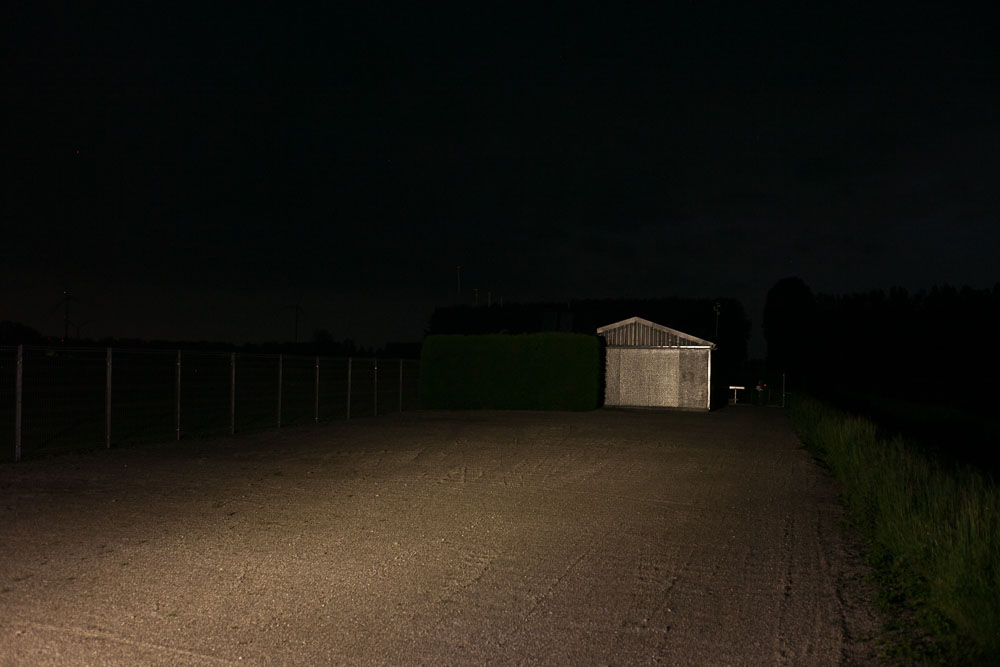
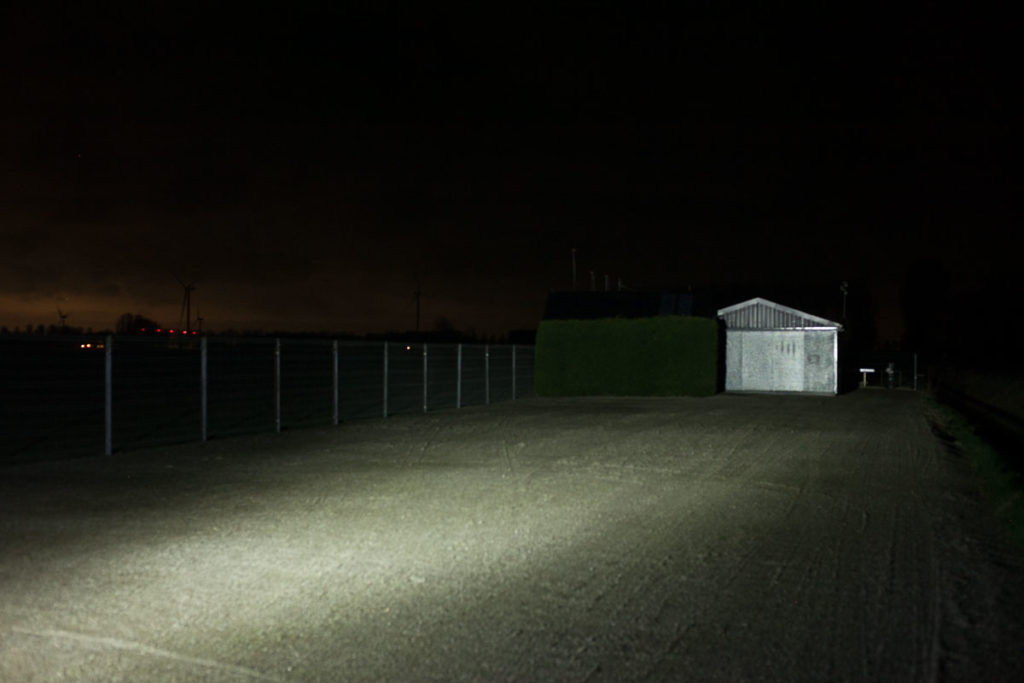
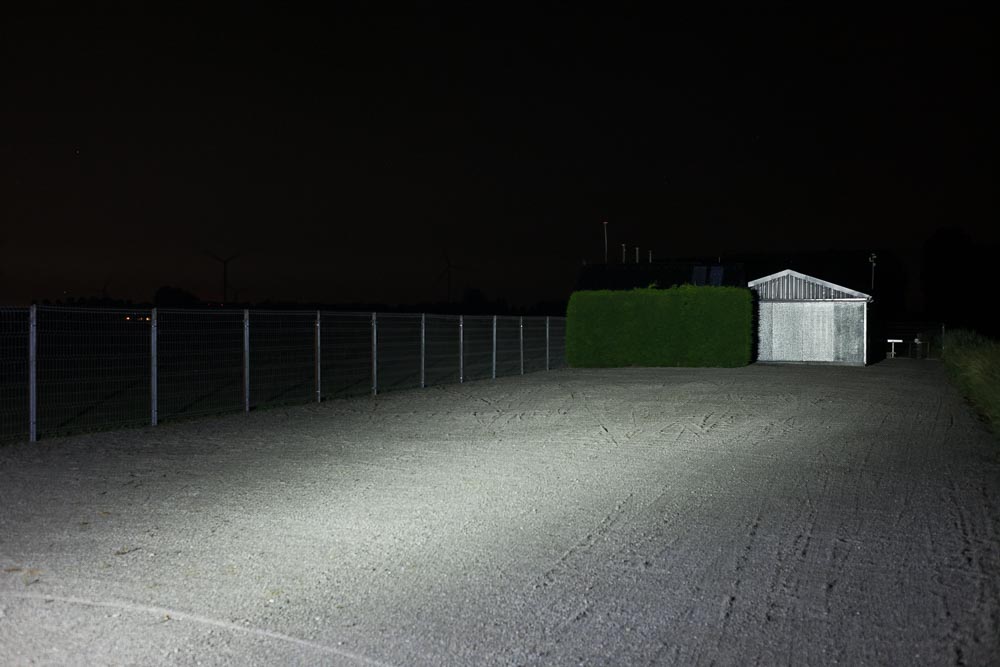
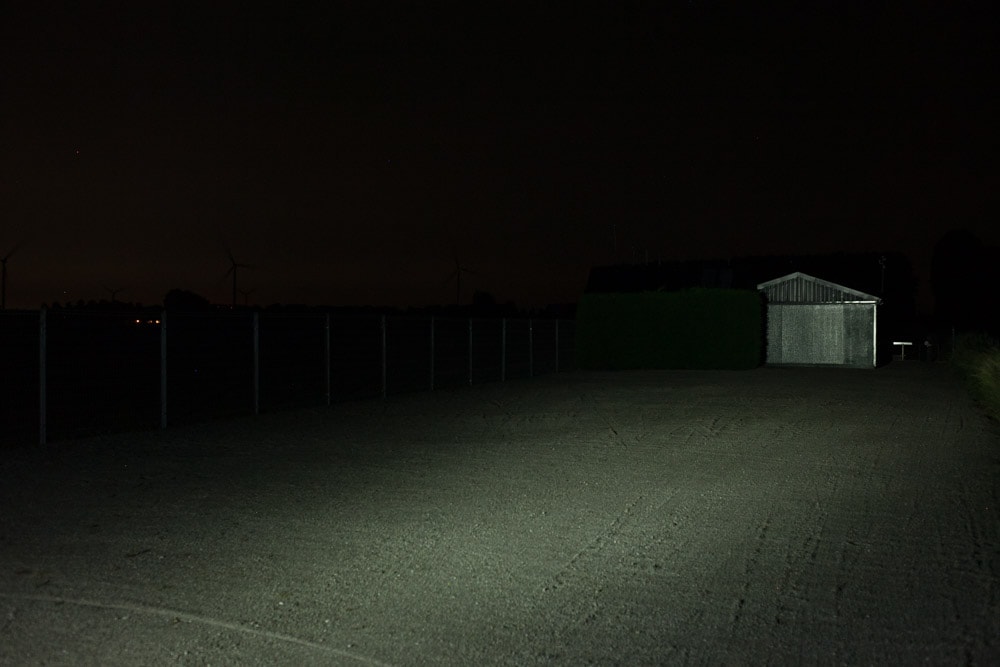
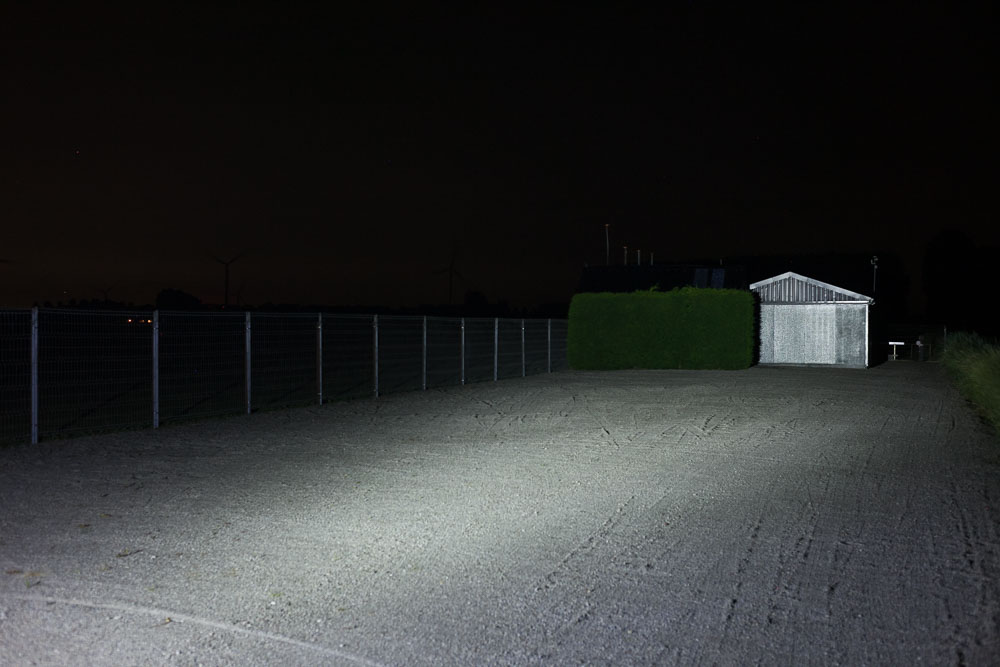
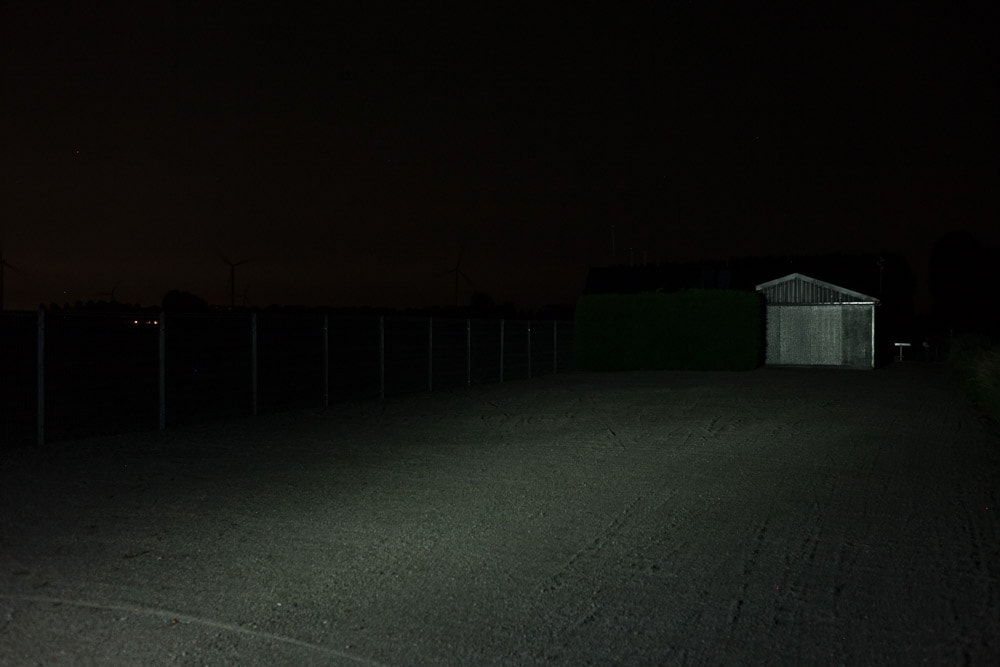
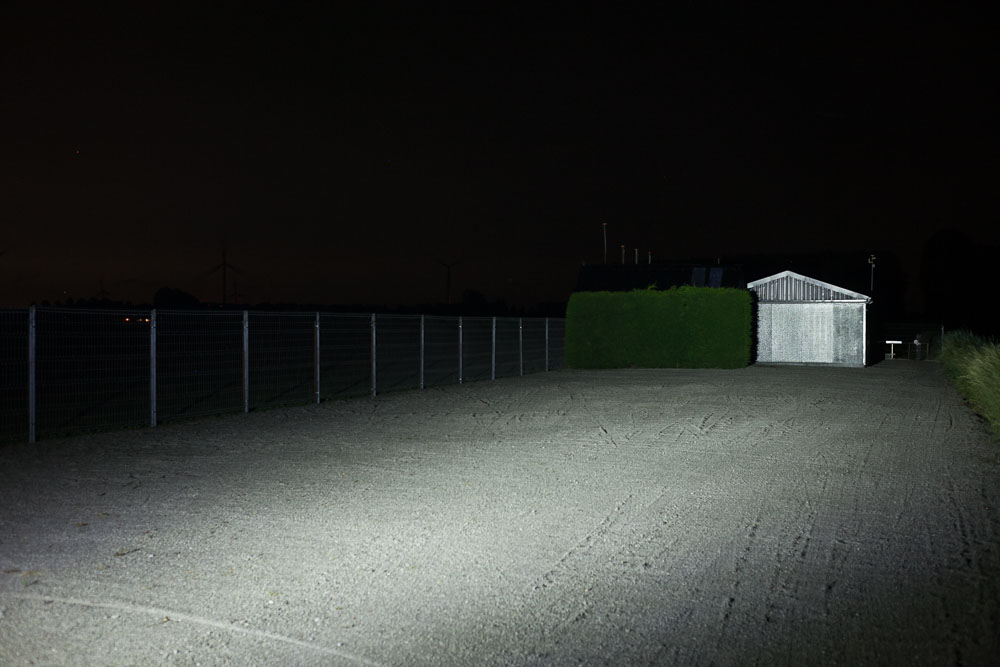
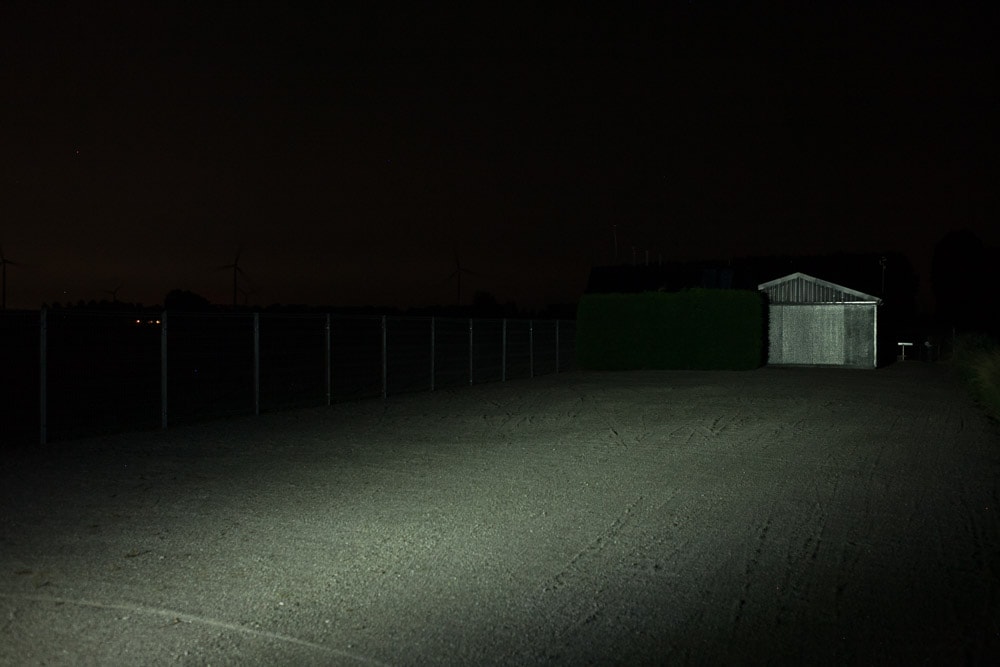

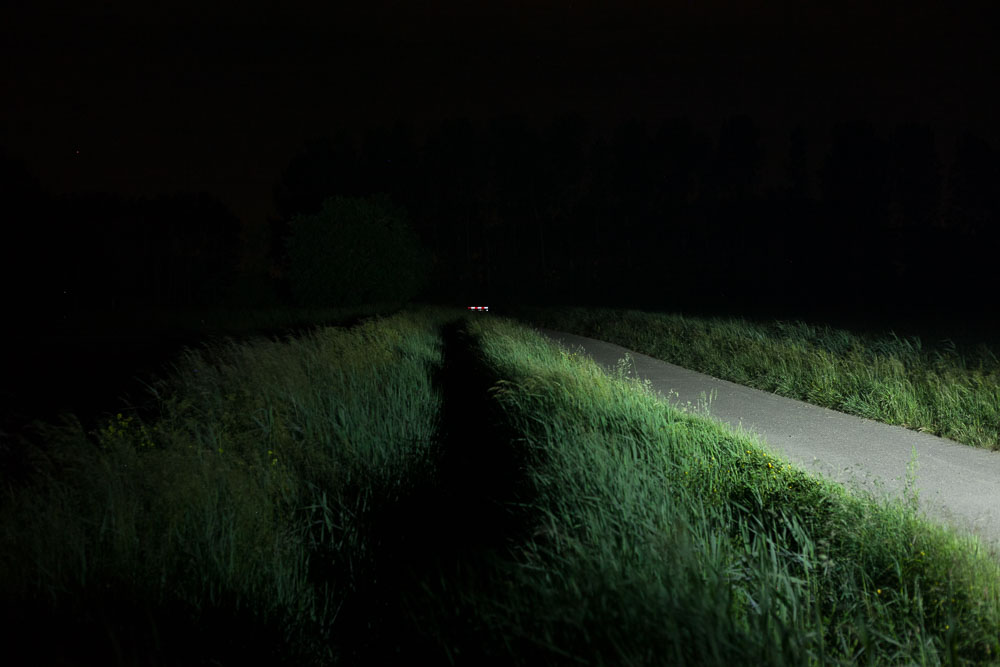
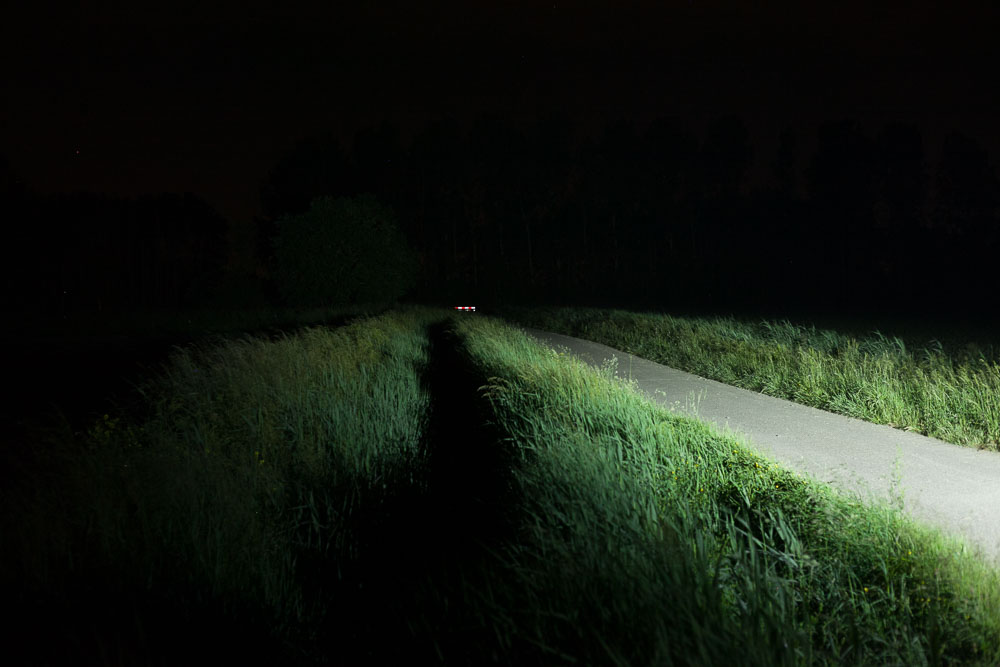
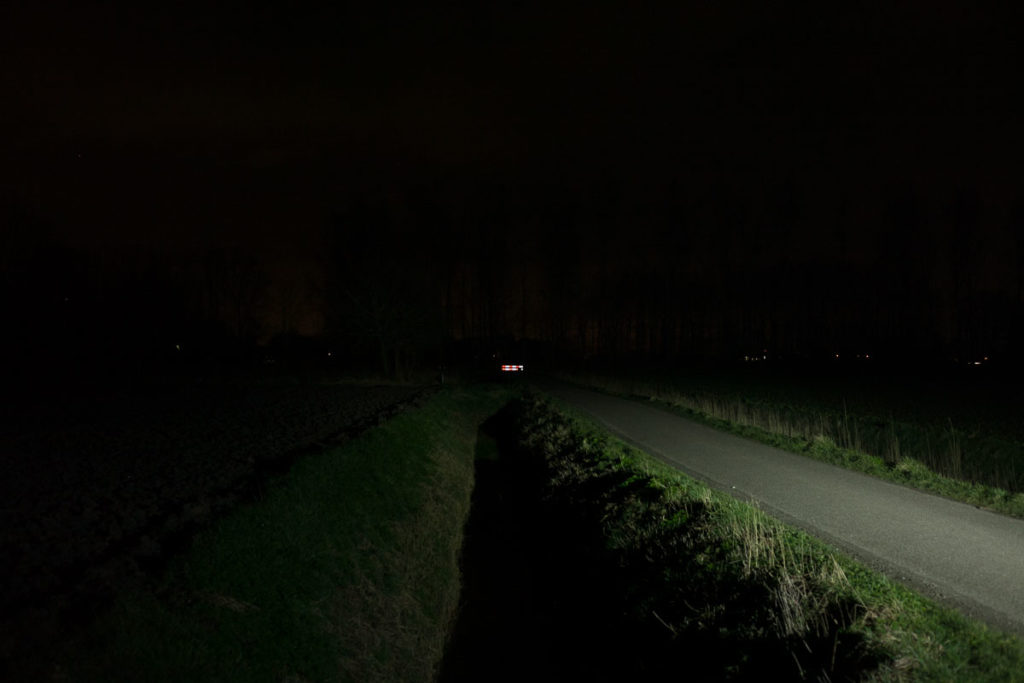
Disclaimer: This flashlight was sent to me for review at no cost by Amutorch. I have not been paid to review, nor have I been holding back on problems or defects.
Final Verdict
Pros
- Very small
- Blinks when the battery runs low to warn you
- Smooth beam
- Plenty bright for such a small light
Cons
- Not reaching the claimed output, nor beam distance
- Little boring design
- Thermal control is just timer-based
- No manual included in the box
Explanation on star ratings:
1: Avoid: my phone flashlight would be a better choice – 2: Poor: significant defect or issues, much better options available at the same price – 3: Average: some defects or issues – 4: Good: recommended (minor issues) – 5: Great: highly recommended

4.0 stars: ★★★★
The Amutorch E3Q is a little, powerful EDC flashlight. In Turbo and High, you get about 40 minutes of runtime, while Low runs for more than 3 hours. If you want something a little bigger, have a look at its bigger brother, the Amutorch E3H with 21700 battery. The E3Q has a few cons, and therefore I give it 4 stars.
Amutorch E3Q for sale
1lumen selects and reviews products personally. We may earn affiliate commissions through our links, which help support our testing.